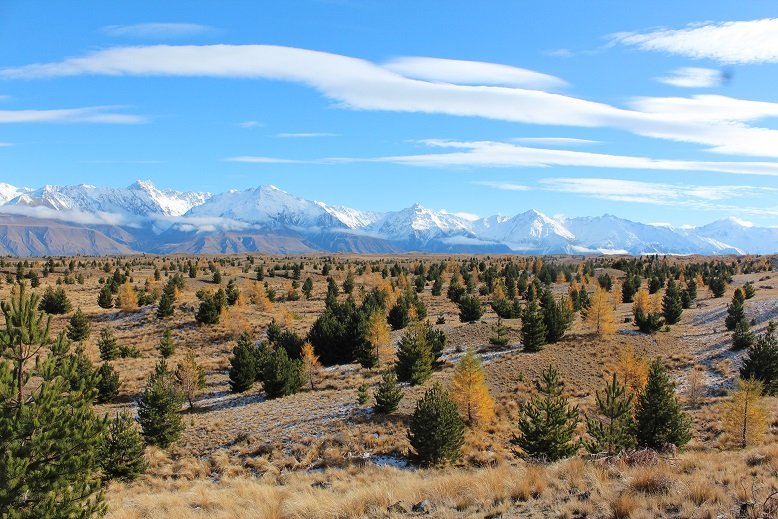What's wrong with wilding trees?
Thursday, July 07, 2016, Nick Ledgard's Blog
Having been a high country forester all my working life and spent much of the later years dealing with wildings, I have long pondered on the pro's and con's of wilding trees. In short I do not favour them, and certainly don't think the FFA should be seen to support them.
Farm forestry is all about the wise (informed) use of the right species in the right site, whereas wildings are quite simply forestry by default.. Too often they are the wrong species, of poor form and varied age and stocking. Even the C market does not make them as attractive as a planned forest. We are currently harvesting wilding Corsican pine (average age around 30) by L. Coleridge, and the varied age and stocking means the forest contains less than half the volume of a similar aged stand of radiata pine. And value-wise we are only getting a stumpage of $2/3k/ha. Why then are we harvesting them? There are a few reasons, but the main one is that they are spreading onto neighbouring properties where they are not wanted. This is also the reason why we are no longer replanting in D-fir. Radiata instead.
The spread risk (in susceptible country) is the main problem with species like contorta, Corsican, larch and D-fir. It is all very well to say 'let them go', but what about the neighbour's opinion and where do you say stop? Plus the cost of 'stopping' can prove formidable. At the moment, there is a vigorous debate about harvesting the 173ha Coronet forest (all D-fir) between Queenstown and Arrowtown. It is aged between 20-30, and ideally harvesting should not start until 2030. But it is sending seed onto hundreds of ha of susceptible land where wildings are not wanted, and the sums indicate that the cost of on-going control could be more than the trees are worth. I will be surprised if the forest is not harvested early - and this will not be the last such discussion relative to D-fir stands in inland S. Island.
To me, the best landuse is all about deciding on objectives and then making informed decisions to meet that goal. If it is decided that land is best in trees (for whatever reason) then lets plant or seed it in the species we want - letting it happen by default (= wilding spread) rarely gives the best outcome.
Attached is an article "What's wrong with wilding trees?" which I wrote in 2010. Hence it is a little dated, but I would still go along with nearly all of what is written.

Disclaimer: Personal views expressed in this blog are those of the writers and do not necessarily represent those of the NZ Farm Forestry Association.

One post
Post from Howard Moore on September 5, 2016 at 5:27PM
Add a post